Related Research Articles
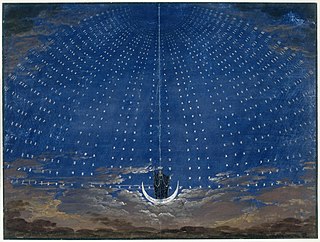
The Magic Flute, K. 620, is an opera in two acts by Wolfgang Amadeus Mozart to a German libretto by Emanuel Schikaneder. The work is in the form of a Singspiel, a popular form during the time it was written that included both singing and spoken dialogue. The work premiered on 30 September 1791 at Schikaneder's theatre, the Freihaus-Theater auf der Wieden in Vienna, just two months before the composer's death. It was the last opera that Mozart composed. Still a staple of the opera repertory, its popularity was reflected by two immediate sequels, Peter Winter's Das Labyrinth oder Der Kampf mit den Elementen. Der Zauberflöte zweyter Theil (1798) and a fragmentary libretto by Johann Wolfgang von Goethe titled The Magic Flute Part Two.

Friedrich "Fritz" Karl Otto Wunderlich was a German lyric tenor, famed for his singing of the Mozart repertory and various lieder. He died in an accident aged 35.
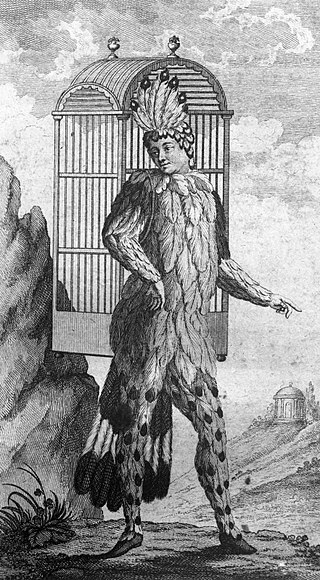
Emanuel Schikaneder was a German impresario, dramatist, actor, singer, and composer. He wrote the libretto of Wolfgang Amadeus Mozart's opera The Magic Flute and was the builder of the Theater an der Wien. Peter Branscombe called him "one of the most talented theatre men of his era". Aside from Mozart, he worked with Salieri, Haydn and Beethoven.

The Magic Flute is Ingmar Bergman's 1975 film version of Mozart's opera Die Zauberflöte. It was intended as a television production and was first shown on Swedish television on 1 January 1975, but was followed by a theatrical release later that year. The work is widely viewed as one of the most successful films of an opera ever made, and as an unusual item among the director's works. The film won the BAFTA TV Award for Best Foreign Television Programme in 1976 and was nominated for the Golden Globe for Best Foreign Language Film and the Academy Award for Best Costume Design.

The Magic Flute is a 2006 romantic fantasy film directed by Kenneth Branagh, adapted from Wolfgang Amadeus Mozart's singspiel Die Zauberflöte. An international co-production between France and the United Kingdom, it was produced by Idéale Audience and in association with UK's Peter Moores Foundation.
"Der Hölle Rache kocht in meinem Herzen", commonly abbreviated "Der Hölle Rache", is an aria sung by the Queen of the Night, a coloratura soprano part, in the second act of Mozart's opera The Magic Flute. It depicts a fit of vengeful rage in which the Queen of the Night places a knife into the hand of her daughter Pamina and exhorts her to assassinate Sarastro, the Queen's rival, else she will disown and curse Pamina.
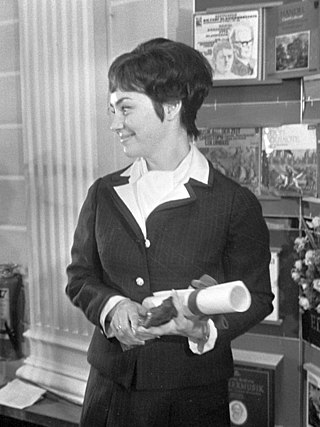
Edith Mathis is a Swiss soprano and a leading exponent of the works of Wolfgang Amadeus Mozart worldwide. She is known for parts in Mozart operas, but also took part in premieres of operas such as Henze's Der junge Lord.
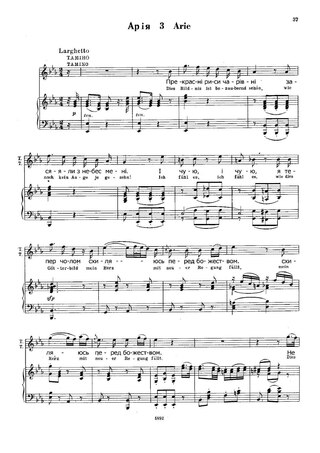
"Dies Bildnis ist bezaubernd schön" is an aria from Wolfgang Amadeus Mozart's 1791 opera The Magic Flute. The aria takes place in act 1, scene 1, of the opera. Prince Tamino has just been presented by the Three Ladies with an image of the princess Pamina, and falls instantly in love with her.

"O zittre nicht, mein lieber Sohn" is the first aria performed by the Queen of the Night in Mozart's singspiel The Magic Flute . It is not as well known as the Queen's second aria, "Der Hölle Rache kocht in meinem Herzen", though no less demanding; the aria requires a soprano coloratura with extremely high tessitura and great vocal flexibility.
The Magic Flute (1791) is an opera by Wolfgang Amadeus Mozart. Other notable works with this title include:
Shirley Love is an American operatic mezzo-soprano. Born in Detroit, Michigan, she studied singing in her home city with Avery Crew before pursuing further voice training with Marinka Gurevich and Margaret Harshaw in New York City. She made her professional opera début at the Metropolitan Opera on November 30, 1963, as the Second Lady in Wolfgang Amadeus Mozart's The Magic Flute with Anna Moffo as Pamina, Nicolai Gedda as Tamino, Gianna D'Angelo as The Queen of the Night, Cesare Siepi as Sarastro, Theodor Uppman as Papageno, and Silvio Varviso conducting.

Ludwig Wenzel Lachnith was a Bohemian horn player and versatile composer influenced by Joseph Haydn and Ignaz Pleyel. Today he is chiefly remembered because of his adaptations of operas by Wolfgang Amadeus Mozart. The French composer and writer Hector Berlioz immortalized him in a diatribe in his autobiography.
"The Veiled Image at Sais" is a 1795 ballad by Friedrich Schiller using ancient Greek, Egyptian and biblical motifs.
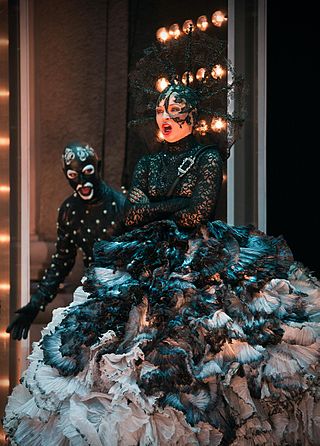
Das Labyrinth oder Der Kampf mit den Elementen. Der Zauberflöte zweyter Theil is a "grand heroic-comic opera" in two acts composed in 1798 by Peter von Winter to a German libretto by Emanuel Schikaneder. The work is in the form of a Singspiel, a popular form that included both singing and spoken dialogue. The opera is a sequel of Mozart's The Magic Flute.
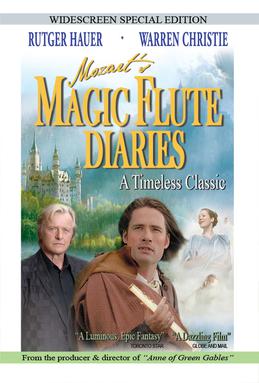
Magic Flute Diaries is a 2008 direct-to-DVD Canadian drama film written and directed by Kevin Sullivan, loosely inspired by Mozart's classic opera The Magic Flute. It stars Rutger Hauer, Warren Christie and Mireille Asselin.
Hildegard Rütgers is a German classical contralto singer in opera and concert.

The Magic Flute is a celebrated opera composed in 1791 by Wolfgang Amadeus Mozart. Mozart employed a libretto written by his close colleague Emanuel Schikaneder, the director of the Theater auf der Wieden at which the opera premiered in the same year.. Grout and Williams describe the libretto thus:
Schikaneder, a kind of literary magpie, filched characters, scenes, incidents, and situations from others' plays and novels and with Mozart's assistance organized them into a libretto that ranges all the way from buffoonery to high solemnity, from childish faerie to sublime human aspiration – in short from the circus to the temple, but never neglecting an opportunity for effective theater along the way.

The Magic Flute, an opera by Wolfgang Amadeus Mozart with libretto by Emanuel Schikaneder, was composed in 1791 and premiered to great success. It has been an important part of the operatic repertory ever since, and has inspired a great number of sequels, adaptations, novels, films, artwork, and musical compositions.
The Magic Flute is a 2022 German musical fantasy film directed by Florian Sigl and written by Andrew Lowery, based on the 1791 opera of the same name by Wolfgang Amadeus Mozart.

Willi Brokmeier was a German operatic lyric tenor, based at the Bavarian State Opera. He focused on operetta roles, with an expressive voice and great acting talent, also appearing in several operetta films. He participated in world premieres such as Bernd Alois Zimmermann's Die Soldaten in 1965, Haydn's Le pescatrici and Ján Cikker's Das Spiel von Liebe und Tod, and performed at major European opera houses. One of his signature roles was Pedrillo in Mozart's Die Entführung aus dem Serail.
References
- ↑ Waldura, Markus: "Der Zauberflöte Zweyter Theil". Musikalische Konzeption einer nicht komponierten Oper. In: Hans Heinrich Eggebrecht, ed.: Archiv für Musikwissenschaft . Stuttgart 1993 (vol. 50. 1993, no. 4), pp. 259–290.
- ↑ Borchmeyer, Dieter, ed.: Johann Wolfgang Goethe. Dramen 1791–1832. Frankfurt am Main 1993 (Johann Wolfgang Goethe. Sämtliche Werke, Briefe, Tagebücher und Gespräche; vol. 6). p. 1049.
- ↑ Waldura, Markus: "Der Zauberflöte Zweyter Theil". Musikalische Konzeption einer nicht komponierten Oper. In: Hans Heinrich Eggebrecht, ed.: Archiv für Musikwissenschaft , Stuttgart 1993 (vol. 50. 1993, no. 4), pp. 259–290, p. 290.
- ↑ Brown, Jane K.: An den Grenzen des Möglichen. Goethe und "Die Zauberflöte". In: Mathis Mayer, ed.: Modell "Zauberflöte". Der Kredit des Möglichen. Kulturgeschichtliche Spiegelungen erfundener Wahrheiten, Hildesheim 2007 (Echo; vol. 10), pp. 187–200, p. 190.
- ↑ Cebadal, George, ed.: Goethes: Die Zauberflöte II. Die Entdeckung von Goethes ägyptischen Mysterien im Bindeglied zwischen Mozarts "Zauberflöte" und der "Faust"-Dichtung. Vollständiges Textbuch von Goethes "Der Zauberflöte zweyter Theil – Fragment" mit einer Einleitung und Neuinterpretation von George Cebadal. Norderstedt 2016, p. 65.
- ↑ Brown, Jane K.: An den Grenzen des Möglichen. Goethe und "Die Zauberflöte". In: Mathis Mayer, ed.: Modell "Zauberflöte". Der Kredit des Möglichen. Kulturgeschichtliche Spiegelungen erfundener Wahrheiten, Hildesheim 2007 (Echo; vol. 10), pp. 187–200. p. 190.
- ↑ "Das ist der kleine 'Faust', – die 'Zauberflöte', wo Homunculus und der Sohn noch Eines sind im leuchtenden Kästchen ..." (Mann, Thomas: Lotte in Weimar . Frankfurt am Main 1965. p. 263)
- ↑ Cebadal, George, ed.: Goethes: Die Zauberflöte II. Die Entdeckung von Goethes ägyptischen Mysterien im Bindeglied zwischen Mozarts "Zauberflöte" und der "Faust"-Dichtung. Vollständiges Textbuch von Goethes "Der Zauberflöte zweyter Theil – Fragment" mit einer Einleitung und Neuinterpretation von George Cebadal. Norderstedt 2016, pp. 50–51.
- ↑ Cebadal, George, ed.: Goethes: Die Zauberflöte II. Die Entdeckung von Goethes ägyptischen Mysterien im Bindeglied zwischen Mozarts "Zauberflöte" und der "Faust"-Dichtung. Vollständiges Textbuch von Goethes "Der Zauberflöte zweyter Theil – Fragment" mit einer Einleitung und Neuinterpretation von George Cebadal. Norderstedt 2016, p. 61.
- ↑ Assmann, Jan: Schiller, Mozart und die Suche nach neuen Mysterien. In: Ernst Behler / Manfred Frank, eds.: Athenäum. Jahrbuch für Romantik. Paderborn 2006 (vol. 16). pp. 13–37, pp. 18–22.
- ↑ Cebadal, George: Goethe, Schiller und die verschleierte Wahrheit. Ein kleiner Beitrag zur Mysterienkultur in Goethes "Faust"-Dichtung und der Weimarer Klassik. Norderstedt 2019, p. 31.
- ↑ Geharnischte, act 2, scene 28: "Ein Weib, das Nacht und Tod nicht scheut, / Ist würdig, und wird eingeweiht."
- ↑ Cebadal, George, ed.: Goethes: Die Zauberflöte II. Die Entdeckung von Goethes ägyptischen Mysterien im Bindeglied zwischen Mozarts "Zauberflöte" und der "Faust"-Dichtung. Vollständiges Textbuch von Goethes "Der Zauberflöte zweyter Theil – Fragment" mit einer Einleitung und Neuinterpretation von George Cebadal. Norderstedt 2016, pp. 46–66.
- ↑ Brown, Jane K.: An den Grenzen des Möglichen. Goethe und "Die Zauberflöte". In: Mathis Mayer, ed.: Modell "Zauberflöte". Der Kredit des Möglichen. Kulturgeschichtliche Spiegelungen erfundener Wahrheiten, Hildesheim 2007 (Echo; vol. 10), pp. 187–200. p. 190.
- ↑ See for a review: Waldura, Markus: "Der Zauberflöte Zweyter Theil". Musikalische Konzeption einer nichtkomponierten Oper. In: Hans Heinrich Eggebrecht, ed.: Archiv für Musikwissenschaft. Stuttgart 1993 (vol. 50. 1993, no. 4), pp. 259–290. p. 260. Or also: Hartmann, Tina: Goethes Musiktheater. Singspiele, Opern, Festspiele, "Faust". Tübingen 2004. p. 299.
- ↑ Hartmann, Tina: Goethes Musiktheater. Singspiele, Opern, Festspiele, "Faust". Tübingen 2004. p. 299.
- ↑ Schiller to Goethe, 23 September 1800 (translation: David Constantine, ed.: Faust. The First Part.).
- ↑ George Cebadal: Goethe, Schiller und die verschleierte Wahrheit. Ein kleiner Beitrag zur Mysterienkultur in Goethes "Faust"-Dichtung und der Weimarer Klassik. Norderstedt 2019. pp. 42–44.